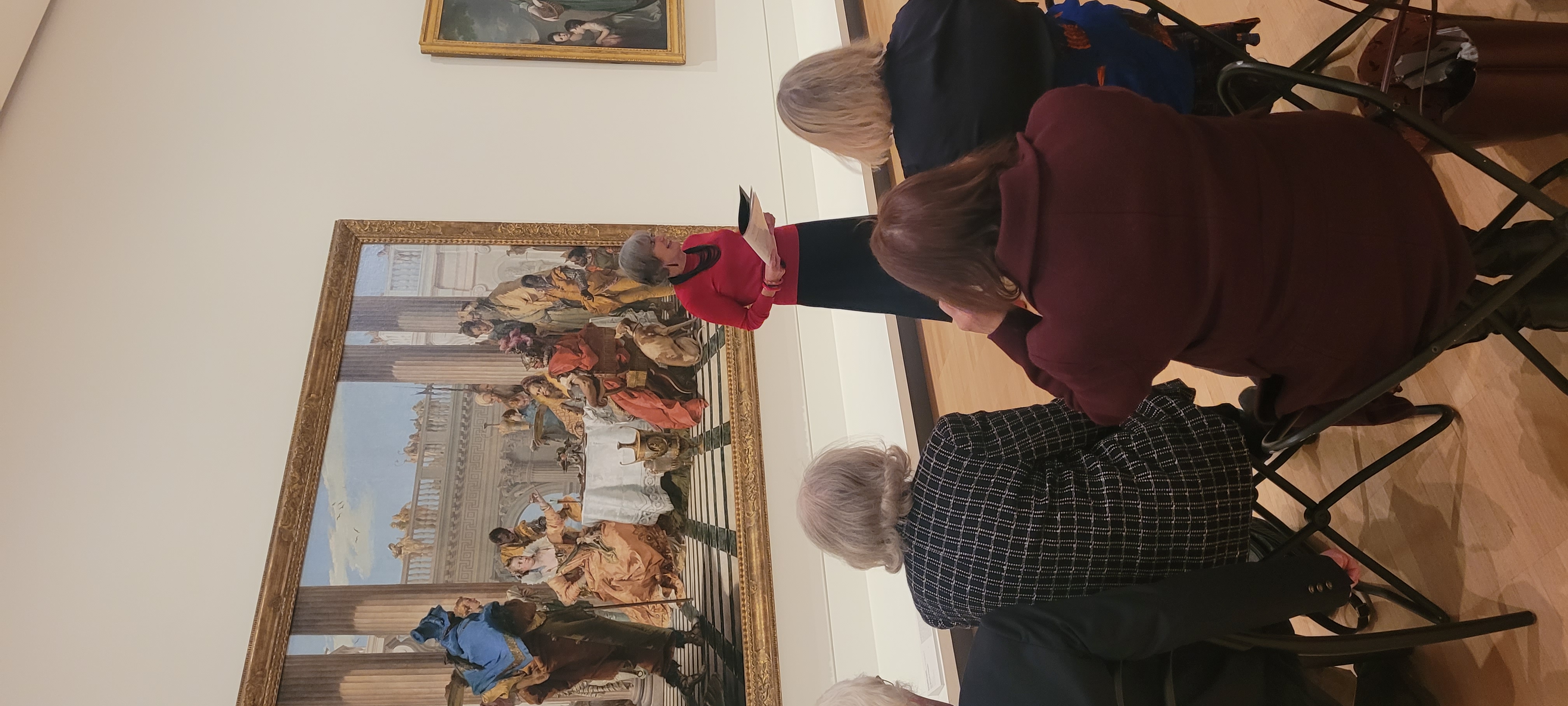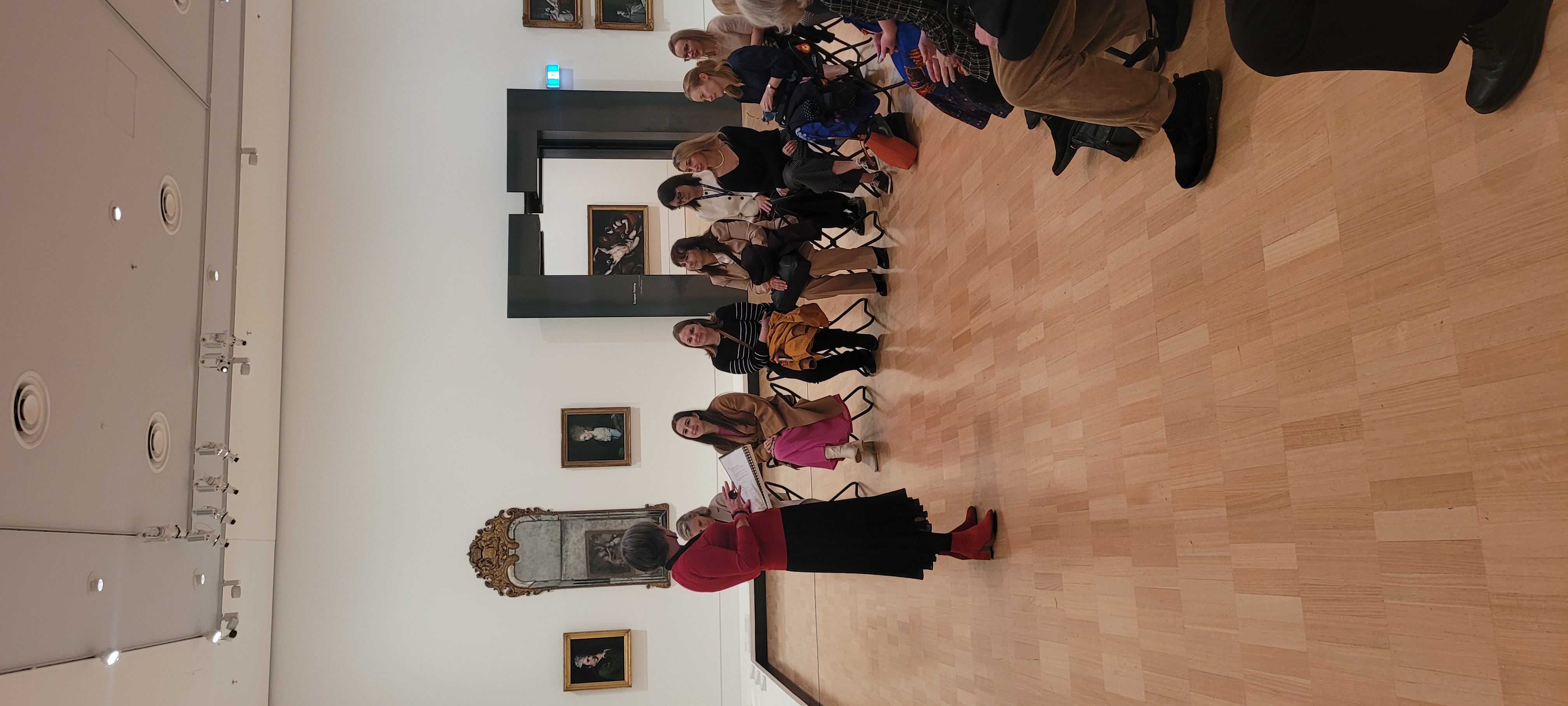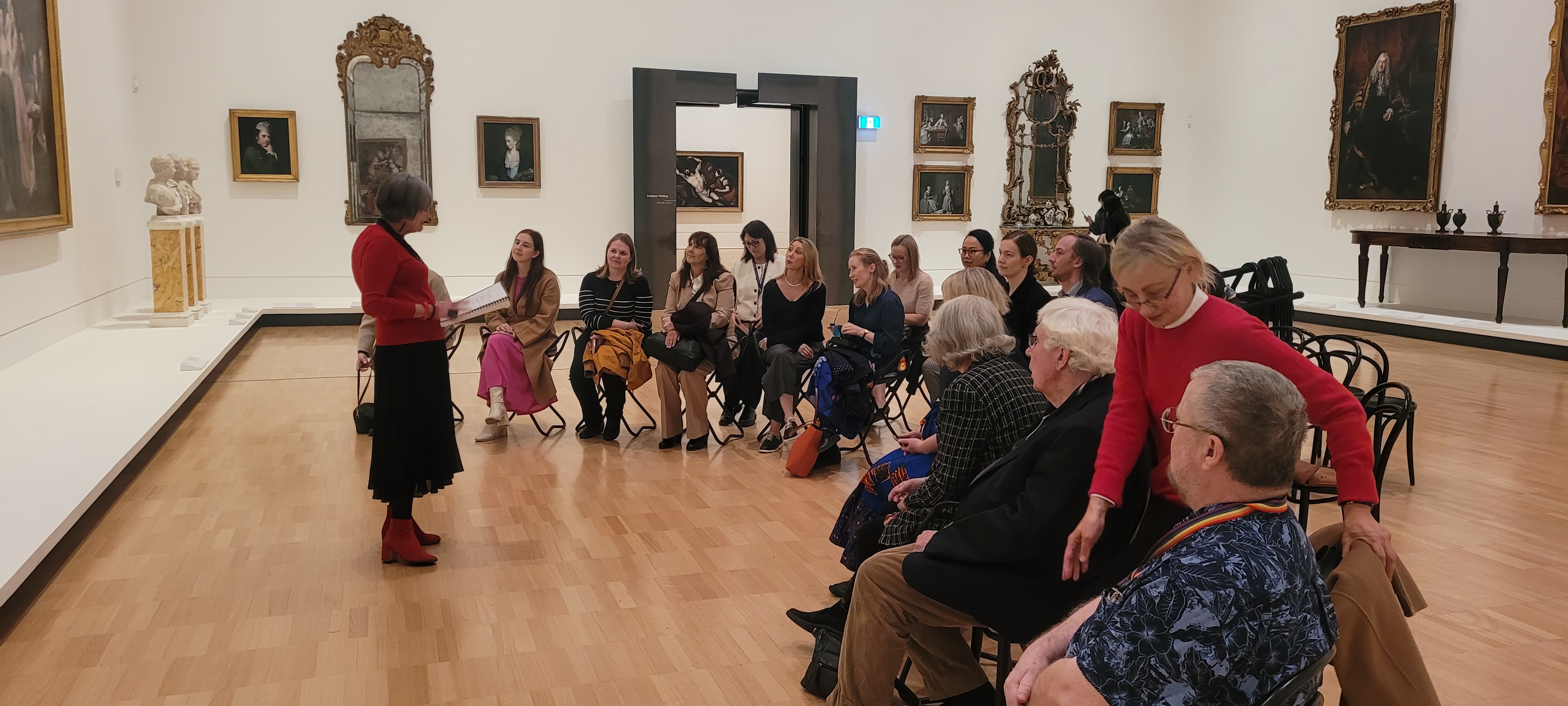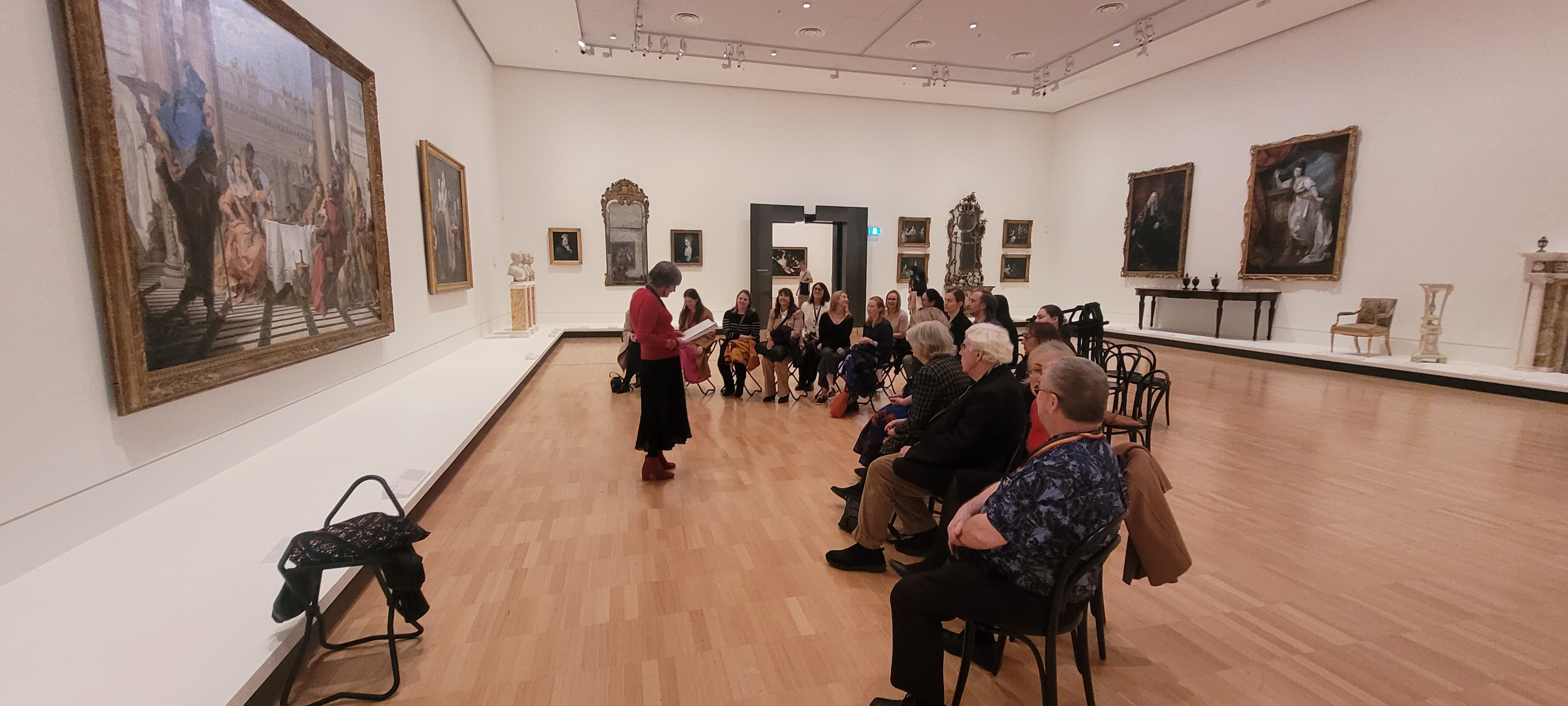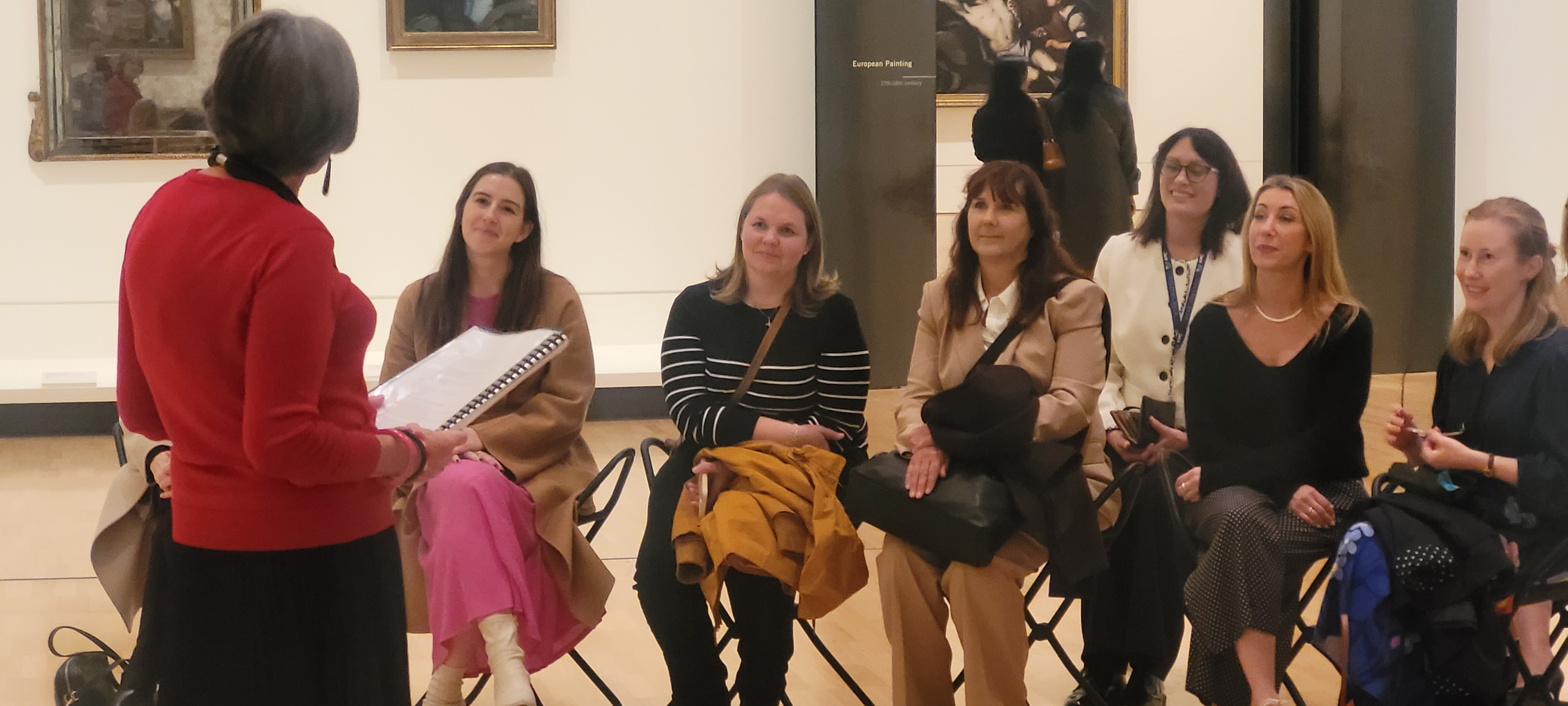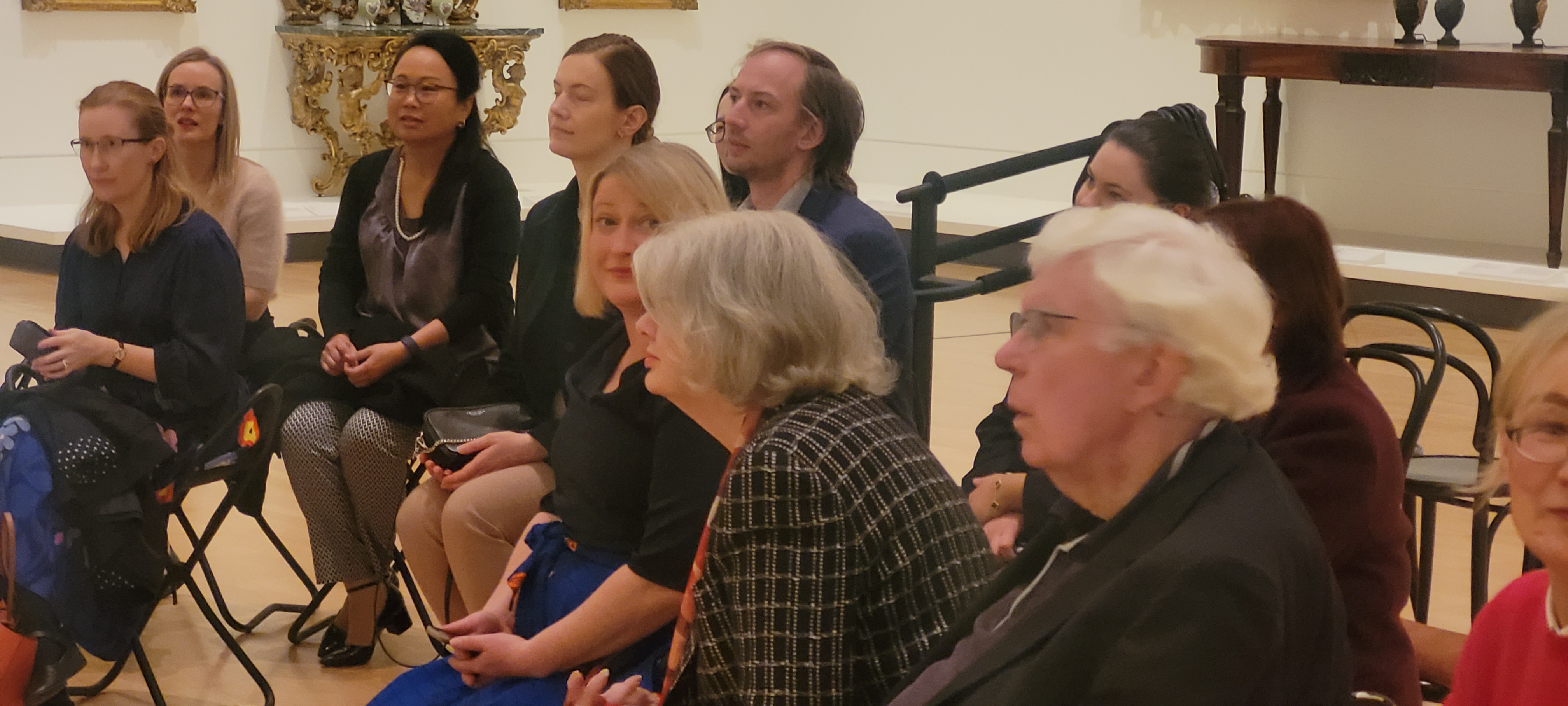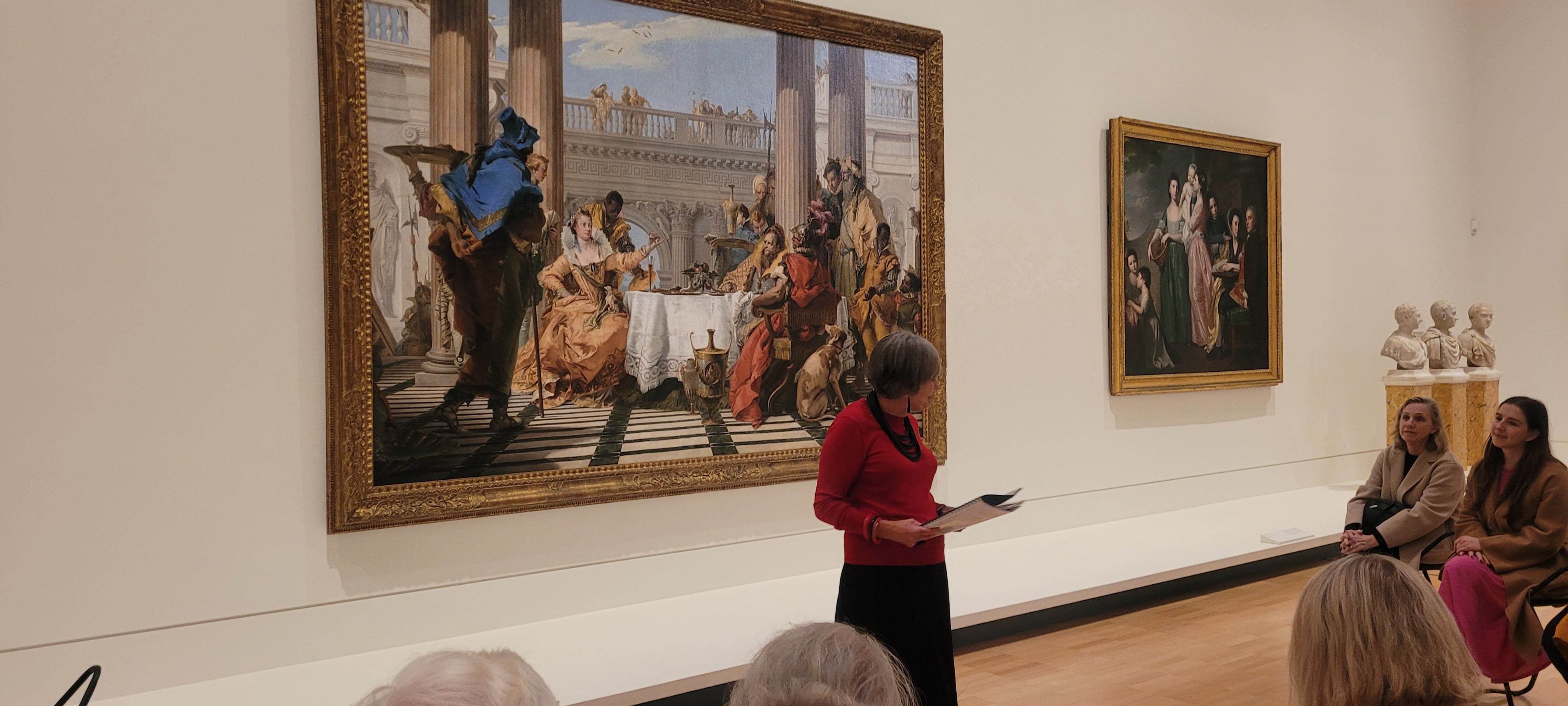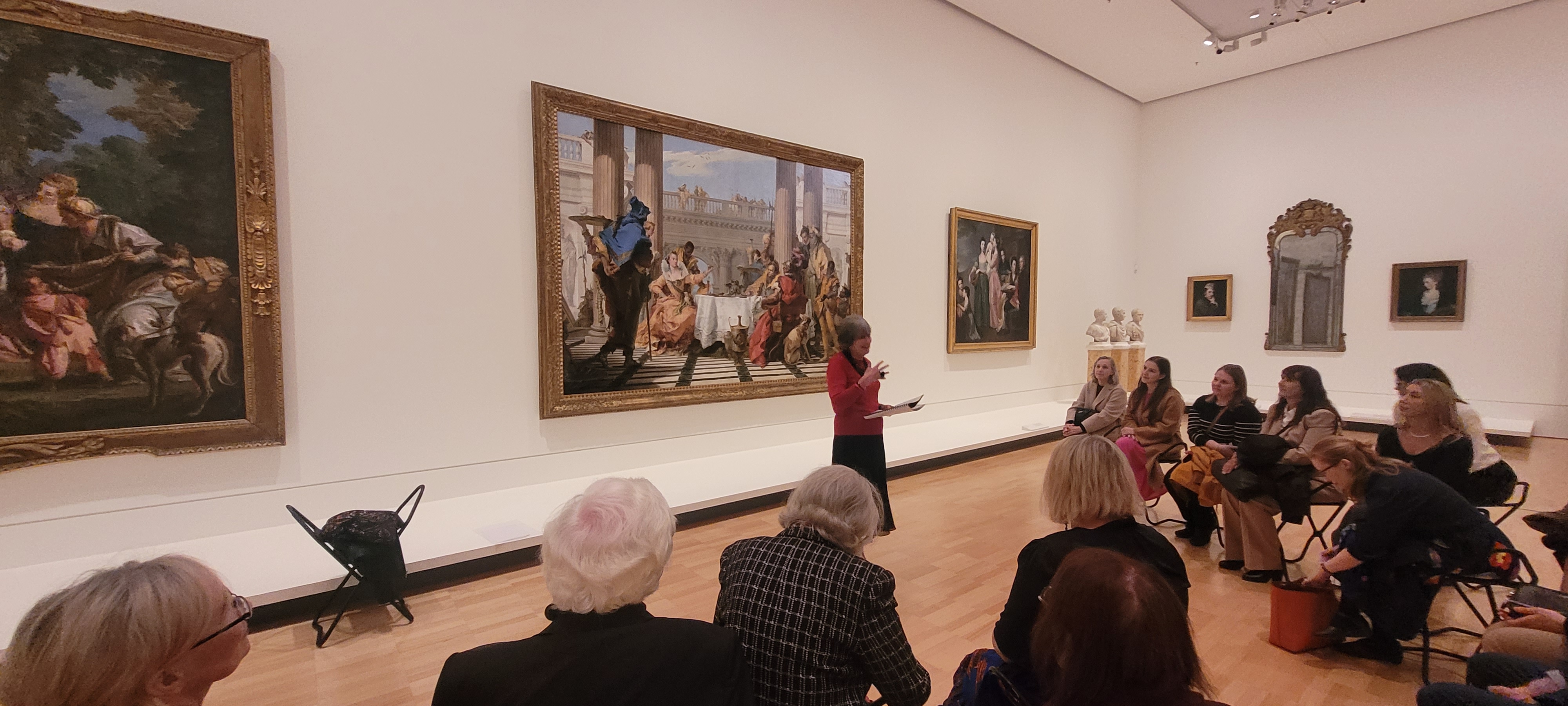WIMnet Victoria: Cleopatra: Courage, Wisdom and Vulnerability event recap
The Women in Resource Sector group and AusIMM members have enjoyed the evening with Cleopatra, at NGV on 6th June 2024. This was a fantastic opportunity to learn about the painting and enjoy the company of Senior Curator Dr Ted Gott, and Senior Educator and Freelance Writer Mr Susie May.
The painting has many significant stories attached to it. One never could discover all of them.
The love affair between the Roman consul Mark Antony (83–30 BC) and the Egyptian queen, Cleopatra (69–30 BC) was a popular subject for artists in the eighteenth century and still attract people to the painting. The episode represented in Tiepolo’s painting is drawn from Pliny’s Natural History (written in AD 77). Here Pliny recounted the tale of a famous contest between the Egyptian and Roman rulers whereby Cleopatra wagered that she could stage a feast more lavish than the legendary excesses of Mark Antony.
Tiepolo shows the dramatic moment at the end of Cleopatra’s repast when, faced with a still scornful Mark Antony, she wins the wager with her trump card. Removing one of a pair of priceless pearl earrings, Cleopatra dissolves it in a glass of vinegar and drinks it, thereby causing Mark Antony to lose his bet. The Banquet of Cleopatra was purchased directly from Tiepolo’s Venice studio in early 1744, by Count Francesco Algarotti, for Augustus III, Elector of Saxony and King of Poland. The artist was paid three hundred zecchini for the painting, which was then dispatched to Dresden (and, subsequently, to the elector’s hunting lodge at Hubertusburg), remaining in the royal collections of Saxony until 1765. However, by the turn of the nineteenth century, The Banquet of Cleopatra had entered the Russian imperial collections, and was for a time placed on a ceiling within the Mikhailovsky Palace in St Petersburg. Later it was transferred to the Hermitage Palace, where it remained until sold to the National Gallery of Victoria by the Soviet authorities in 1932. During the period of 1919 -1930 the Soviet authorities were traded many valuable art works in order to invest into industrialisation and development of the resource sector of Russia.
The beauty of this painting will be continued to be discovered and interpreted by many generations to come.
